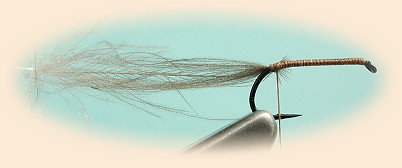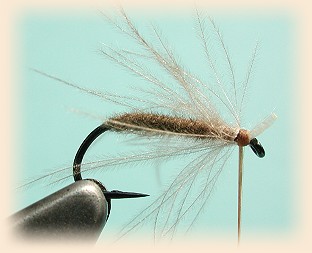
 |
|
CDC and Elk
|
|
4. Tie off with one or two tight turn(s) of thread,
unclip the hackle but do not trim yet. Tighten with
another two turns of thread. You will see that the
CDC butt will move with the thread, tightening a
fraction further at the tie-off point. Trim the CDC
butt. 5. Take a small amount of straight, fine-tipped deer hair. (I use coastal deer) Even the tips in a stacker. Lay the bunch on top of hook, parallel to the shank. Measure the tips so the wing will be just long enough to reach the outside bend of the hook, and no longer. Trim butts square (perpendicular to the strands) with the front of the eye of the hook prior to tying in the wing. 6. Tie down the wing with two tight wraps of thread over the hair stubs. Make a third wrap with the thread, through the stubs, at a 45 degree angle. Fourth wrap goes under the stubs. Complete the fly with a whip finish under the stubs, and a little varnish.

Fishing Tip:
Note: For more terrific flies from all over the world visit Hans website, Flytier's page at: https://www.danica.com/flytier/index.php |
|
For more great flies, check out:
Beginning Fly Tying,
Intermediate Fly Tying and Advanced
Fly Tying.
|

